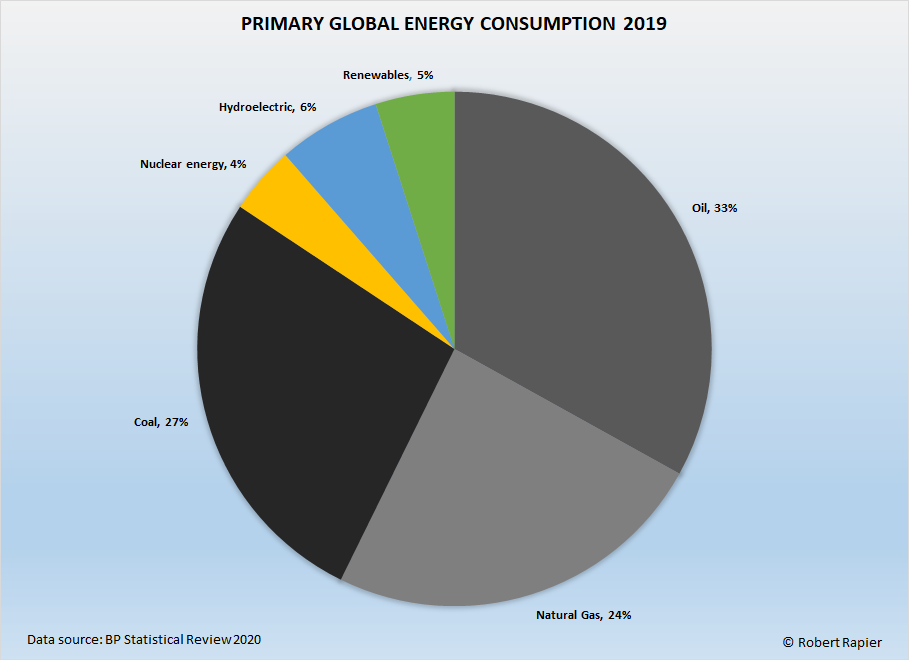This week BP released its Statistical Review of World Energy 2020. The Review covers energy data through 2019, and provides a comprehensive picture of supply and demand for major energy sources on a country-level basis.
This annual report is one of the most important sources of global energy data. It is a primary source of data for numerous companies, government agencies, and non-government organizations.
As I do every year, following the Review’s release I analyze the data, create graphics, and try to provide a unique interpretation. I strive to find hidden gems or overlooked facts in the data.
Today I want to cover the major highlights of this year’s Review.
Primary energy consumption grew by 1.3% last year, which was less than half the rate of 2018 (2.8%). Nevertheless, this still represents the 10th consecutive year that the world set a new all-time high for energy consumption.
The largest share of the increase in energy consumption, 41%, was contributed by renewables. Natural gas contributed the second largest increment with 36% of the increase. However, as an overall share of energy consumption, oil remained on top with 33% of all energy consumption. The remainder of global energy consumption came from coal (27%), natural gas (24%), hydropower (6%), renewables (5%), and nuclear power (4%).
Cumulatively, fossil fuels — shown below in shades of gray — still accounted for 84% of the world’s primary energy consumption in 2019.

China was responsible for three quarters of the world’s energy consumption growth, followed by India and Indonesia. The U.S. and Germany posted the largest declines. Related: Suppliers Fight For Dominance In This Crucial Gas Market
Carbon dioxide emissions set a fourth consecutive new all-time high. However, emissions growth last year was only 0.5%, which was less than half the 10-year average. Since the negotiation of the 1997 Kyoto Protocol to curb emissions, global carbon dioxide emissions have risen by 50%.
Oil consumption also grew to a new record, again led by demand growth from China. But global oil production fell for the first time in a decade, as growth in the U.S. was more than offset by OPEC production cuts. Given the impact Covid-19 is having on the world’s energy markets, it looks like 2018 may stand as the high mark for oil production for at least a couple of years.
Natural gas consumption rose by 2% in 2019 as the share of natural gas in primary energy consumption rose to a record high of 24.2%. Natural gas production grew to a new record, with U.S. production accounting for almost two-thirds of this increase.
Global coal production increased by 1.5%, led by increases in China and Indonesia. But global coal consumption declined by 0.6% and coal’s share in primary energy fell to the lowest level in 16 years. Coal demand in OECD countries fell to the lowest level in the history of the Review, which dates to 1965.
Renewable energy continued its impressive growth streak with the largest increase in consumption on record. Wind was the largest contributor, but solar was close behind. China once again led all countries in consumption of renewables, followed by the U.S. and Japan. The share of renewables in power generation increased to 10.4%, surpassing nuclear power for the first time.
ADVERTISEMENT
Nuclear consumption rose at the fastest level since 2004, with China and Japan providing the largest contributions to the increase.
Over the next month or so, I will do a deeper dive into the individual categories within the Review.
More Top reads From Oilprice.com:
- Oil Market Optimism Is Entirely Misplaced
- Inside Singapore's $3 Billion Oil Trading Scandal
- How Viable Are Net Zero Strategies For Energy Companies?


















